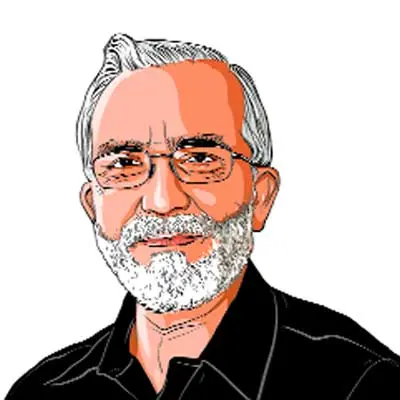Opinion Life in a metro
Pune today is a city of contrasts and frivolities
Tragedy brings attention. The bomb blast in Pune a fortnight ago has brought everyones attention to a city that has often lived in the shadow of Mumbai. With Punes loss of innocence,many questions are being asked about the city and often wrong questions. But,what after all is Pune like?
Some 18 months ago,when serving and ex-army officers were being investigated by the ATS for alleged involvement in terrorist activities,Hindutva organisations in Pune had put up banners glorifying those officers as deshbhakts. Recently,when the bomb blast took place in the sedate and exclusive part of Pune city,even while there is uncertainty about who did it,Muslims in the city congregated to announce that they stand by aman and rashtra. A striking contrast! Pune city is made up of many such contrasts.
Ever since the current commissioner of police came to Pune,he has been concerned about the two-wheeler riders of the city mainly women who wear a scarf around their face. After the recent bomb blast,his force turned attention yet again to this issue sincerely believing that terrorists wear masks. Too much movie watching,you might say! This is not an isolated instance. On the whole,administration of the city is marked by such frivolity. Contrasting social realities and frivolity of approach mark the collective existence of todays Pune.
From a typical pensioners city dominated mostly by Brahmins and Brahminical culture,Pune graduated into the industrial league in the 60s and then on grew up also as an education hub in western India. This transformation ensured that the middle class character of the city was not disturbed. Pune also assumed a more cosmopolitan character through the 80 and much more so later,with the expansion of the software industry. Historical legacy and contemporary social developments have produced at least three potential fault lines in the city.
As a carry-forward of the last century,there is a Brahmin-Maratha contestation. It is relevant to the cultural and political life of the city. This contestation overshadows claims by the OBCs and the Dalits. Unlike a hundred years ago,this contestation,however,is no more talked about and does not unfold in the public sphere in an open manner. One could even say that transformations of the last century have almost pushed this fault line into the by-lanes of memory.
Second,developments since the 60s have practically produced a new Pune. This new Pune managed to bring about an alliance of the lower middle and the middle classes in such a fashion that fault lines based on class cannot become sensitive in the political economy of the city. To appreciate this point one simply has to witness the coexistence of jostling crowds on Laxmi Road the business district of the old city with the din in the upmarket malls that have come up in the last 10 years. These are two worlds apart,but they do not confront each other,rather they tend to overlap. The competition seems to be within sections of the middle class rather than between the well-off and the poor.
Third,todays Pune has almost one-third of its population speaking languages other than Marathi.
The non-Marathi groups are found among petty self-employed,
artisans and also among the upwardly mobile techies. This could be an emerging fault line of the Pune of 2020! But as of now,happily,the city has a Sikh mayor though the Sikh community does not have any numerical clout.
Alongside these and numerous other contrasting images,frivolity characterises policy-making and administration of the city. As elsewhere,nobody seems to be worried about the effects of the construction industry nor are there efforts to regulate this sector. Interests of these same sectors dominate the issue of incorporation of adjoining villages into the Pune municipal corporation. This deeper issue of domination of the construction industry rarely gets discussed. It is kept almost entirely out of the purview of politics for obvious reasons. Consequently,the city is unable to attend seriously to issues of infrastructure. While writing this,a huge garbage depot on the outskirts of the city has caught fire and the city is at best clueless and at worst unconcerned about this issue.
Anyone who spends more than 24 hours in the city without an obliging local host will experience the poor transportation facilities. Privately run three-wheelers are not affordable for large sections; public transportation,if not altogether invisible,is costly and also poorly managed. So,the city is simultaneously considering a BRT scheme,a ring road scheme,metro rail,and what have you. In a rare flight of fancy,in 2002 the Congress party manifesto for civic elections in fact promised a sky bus! The lesson is that sky is (literally) the limit when it comes to city planning.
When overall city planning and administration are in such a frivolous mode,why should the policing and security discourse be any more serious? While the city remained calm and maintained its poise in the aftermath of the bomb blast,the city police were busy giving lectures in local educational institutions about security measures and how citizens should remain alert. Now,there is a proposal to ban all vehicular traffic on streets near the site of the blast taking into consideration the security threat. Only six months ago,when the swine flu epidemic broke,all and sundry made noises and forced educational institutions to close down. We believe that a permanent curfew might be a good idea to tackle terror and epidemics effectively.
Perhaps,one could only draw satisfaction from the thought that such contrasts and frivolities mark not only Pune,but life in most growing cities of India.
The writer teaches political science at Pune University
express@expressindia.com





